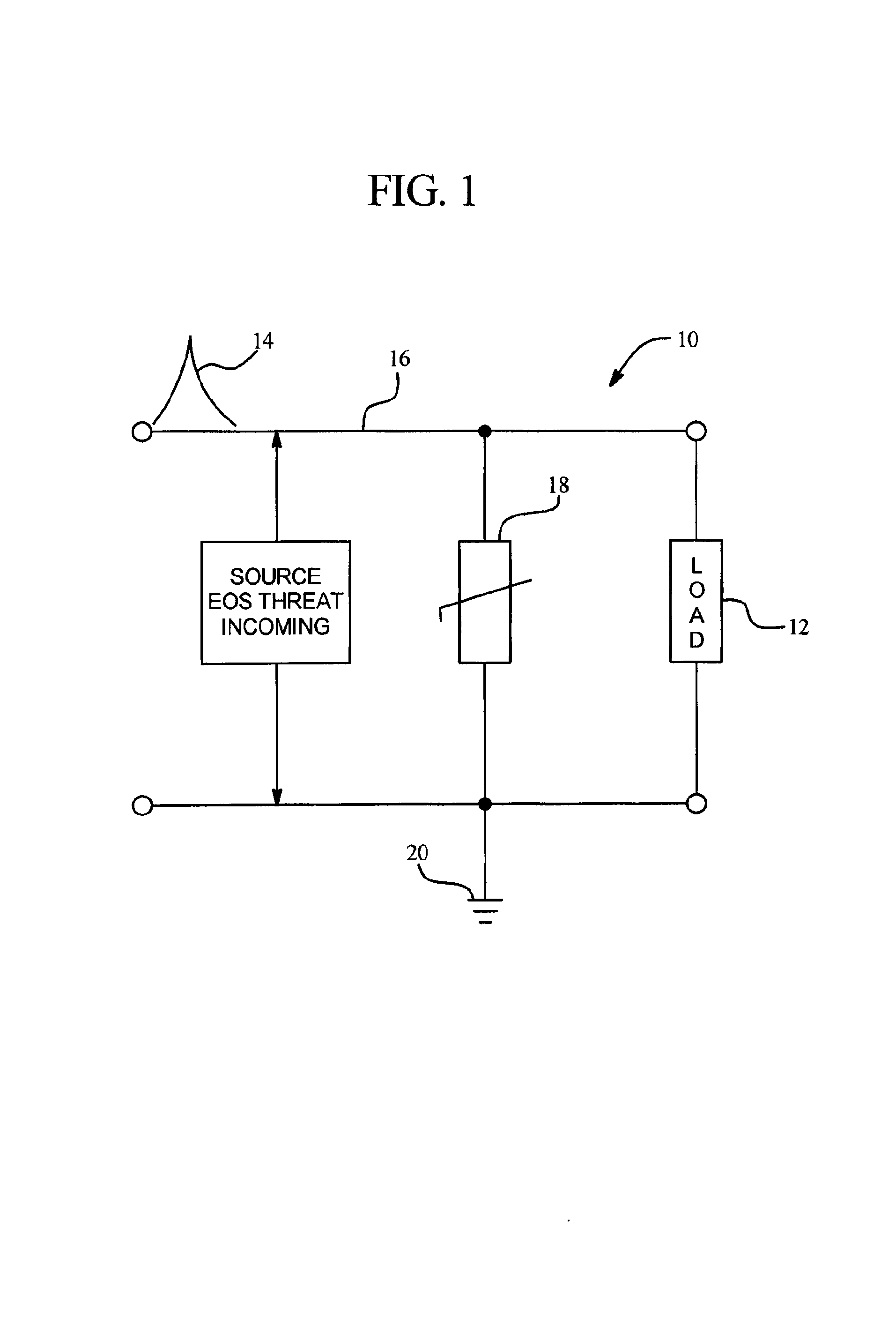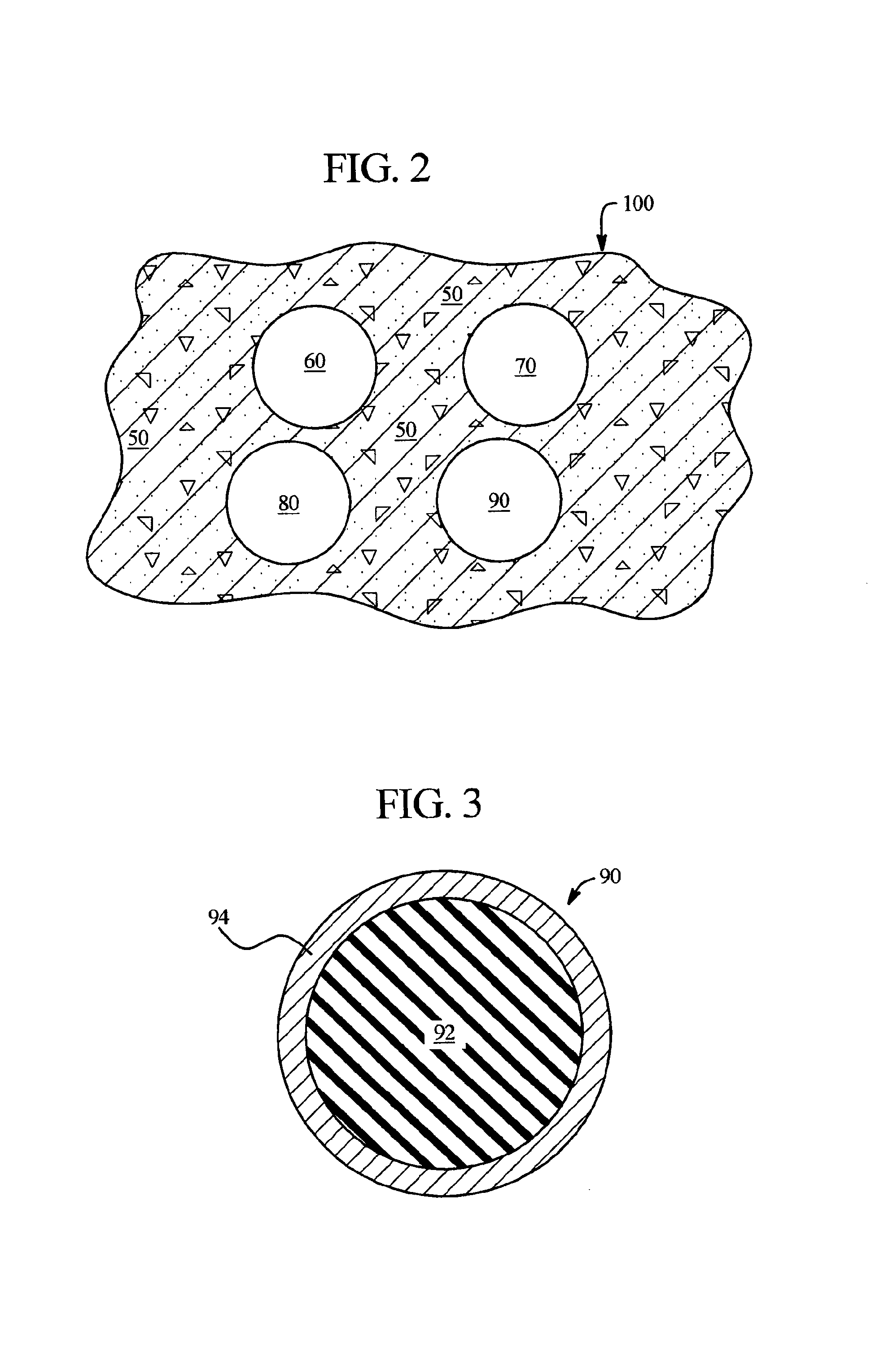Voltage variable material for direct application and devices employing same
a voltage variable material and direct application technology, applied in the field of circuit protection, can solve the problems of consuming valuable board space, adding to the potential for defects, and adding to the number
- Summary
- Abstract
- Description
- Claims
- Application Information
AI Technical Summary
Benefits of technology
Problems solved by technology
Method used
Image
Examples
Embodiment Construction
[0049]Referring now to FIG. 2, a voltage variable material (“VVM”) 100 of the present invention includes an insulative binder 50. The binder 50 secures one or more or all of certain different types of particles, such as insulating particles 60, semiconductive particles 70, doped semiconductive particles 80, conductive particles 90 and various combinations of these. The insulative binder 50 has intrinsically adhesive properties and self-adheres to surfaces, such as a conductive, metal surface or a non-conductive, insulative surface. The insulative binder 50 has a property of being self-curing, so that the VVM 100 can be applied to a circuit or application and be used thereafter without heating or otherwise curing the VVM 100 and the insulative binder 50. It should be appreciated, however, that the circuit or application employing the VVM 100 with the binder 50 may be heated or cured to accelerate the curing process.
[0050]The insulative binder 50 of the VVM 100 in an embodiment includ...
PUM
 Login to View More
Login to View More Abstract
Description
Claims
Application Information
 Login to View More
Login to View More - R&D
- Intellectual Property
- Life Sciences
- Materials
- Tech Scout
- Unparalleled Data Quality
- Higher Quality Content
- 60% Fewer Hallucinations
Browse by: Latest US Patents, China's latest patents, Technical Efficacy Thesaurus, Application Domain, Technology Topic, Popular Technical Reports.
© 2025 PatSnap. All rights reserved.Legal|Privacy policy|Modern Slavery Act Transparency Statement|Sitemap|About US| Contact US: help@patsnap.com



